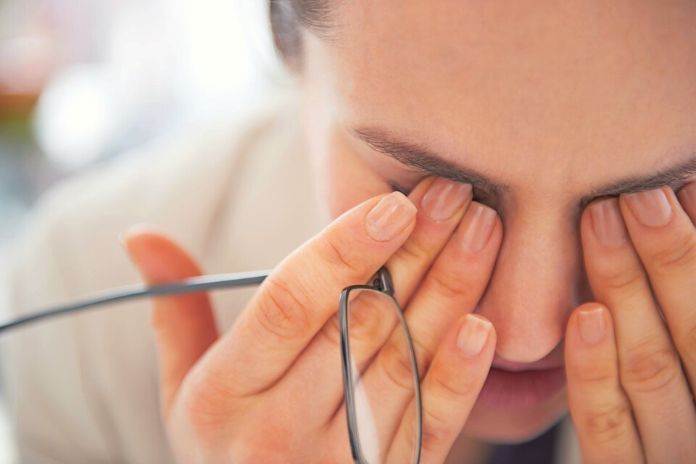Red, dry, painful… Our eyes can sometimes suffer from minor ailments. We take stock! Your eye is red, irritated, painful, itchy; your sight is blurry, itchy… There is no doubt that you are suffering from eye inflammation. Viruses, bacteria, allergies, or diseases like rheumatism usually cause an unpleasant eye problem. Now remains to give a name to evil because eye problems are numerous!
Conjunctivitis, Keratitis, Blepharitis… How To Recognize Eye Problems?
Conjunctivitis: Red Eye!
The “white of the eye” reddens very diffusely, and this can affect both eyes. However, there is no associated pain, and vision is not impaired; sometimes, secretions stick to the eyelashes. Many conjunctivitis is of allergic origin (pollen, dust ) but can also be infectious, viral, or bacterial. What to do? Clean the eye with physiological serum and consult your general practitioner if, after a few days, the infection does not pass.
Keratitis: Red And Painful Eye!
Do you feel significant discomfort in the light (photophobia), and your vision is blurred? It is undoubtedly keratitis, in other words, an inflammation of the cornea whose causes can be varied: infectious, viral, or even linked to the consequences of physical trauma (scratch from a tree branch, presence of a foreign body, irritation caused by contact lenses…). What to do? Depending on the origin of the cause, the treatment will be different, hence the need to consult an ophthalmologist urgently.
Blepharitis: Swollen Eyelid At The Eyelashes!
This inflammation of the eyelid, which can also lead to small whitish deposits and dryness of the eye due to a reduction in tears, is annoying but not severe. It is often the consequence of a dysfunction of the glands located on the edge of the eyelids ( the Meibomian glands ). This pathology appears with age, but can be favored by skin disease (rosacea…), the prolonged wearing of contact lenses, or environmental factors, such as air conditioning, wind, or pollution.
What to do? There is no cure for this chronic disease, which is frequent and prone to flare-ups, but its effects can be mitigated. To help the glands work better, apply a sterile compress or a clean washcloth, soaked in warm water, to the lower and upper eyelids, then gently massage in small lateral movements. The tear film can be supplemented with moisturizing eye drops.
Floaters: The Presence Of “Flies” In Front Of The Eyes
From time to time, do you feel that flying flies or moving spots pass in front of your eyes? If there is no loss of vision, nothing serious; they are small accumulations of filaments, called “floaters,” which have detached from the vitreous – a gelatinous substance made of water and collagen filling the more significant part of the eyeball – and pass in the optical axis. They move with eye movements, then disappear spontaneously.
What to do? To eliminate them quickly, drink plenty of water during the day. In case of persistence, consult the ophthalmologist to check the state of the retina with a fundus. It is an emergency if there is a sudden increase in the number of floaters or the presence of associated signs (haze, reduced vision, or flashes of light).
Ophthalmic Checks: The Right Rhythm To Adopt!
Four periods in life require consultation with an ophthalmologist.
- Between 2 and 20 years. To monitor the appearance of myopia, we do a check-up every two years.
- From 20 to 40 years old. A visit every five years is sufficient if there are no visual disturbances.
- From 40 to 60 years old. This is the beginning of presbyopia. Schedule an appointment every two years to check visual acuity.
- From 60 years old. We are entering the period of three major eye diseases: glaucoma (rise in eye pressure causing damage to the optic nerve), AMD (age-related macular degeneration), and cataracts (the lens becomes opaque). An annual review may be required.
Read Also: What Should You Eat To Have Beautiful Skin?
